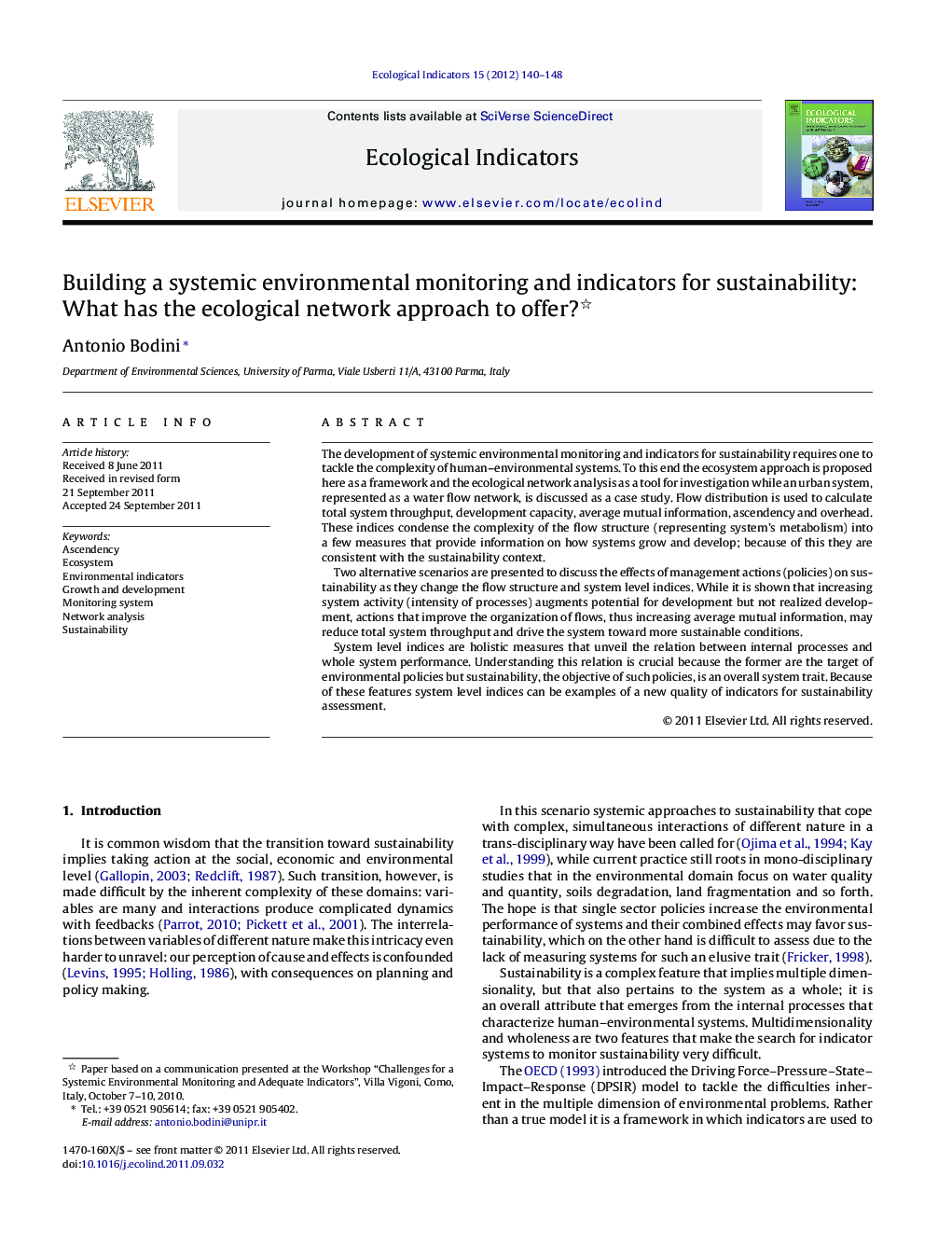| Article ID | Journal | Published Year | Pages | File Type |
|---|---|---|---|---|
| 4373924 | Ecological Indicators | 2012 | 9 Pages |
The development of systemic environmental monitoring and indicators for sustainability requires one to tackle the complexity of human–environmental systems. To this end the ecosystem approach is proposed here as a framework and the ecological network analysis as a tool for investigation while an urban system, represented as a water flow network, is discussed as a case study. Flow distribution is used to calculate total system throughput, development capacity, average mutual information, ascendency and overhead. These indices condense the complexity of the flow structure (representing system's metabolism) into a few measures that provide information on how systems grow and develop; because of this they are consistent with the sustainability context.Two alternative scenarios are presented to discuss the effects of management actions (policies) on sustainability as they change the flow structure and system level indices. While it is shown that increasing system activity (intensity of processes) augments potential for development but not realized development, actions that improve the organization of flows, thus increasing average mutual information, may reduce total system throughput and drive the system toward more sustainable conditions.System level indices are holistic measures that unveil the relation between internal processes and whole system performance. Understanding this relation is crucial because the former are the target of environmental policies but sustainability, the objective of such policies, is an overall system trait. Because of these features system level indices can be examples of a new quality of indicators for sustainability assessment.
